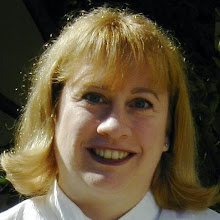OK, I can't take credit for the subject line. But the person who came up with it is no longer using it, so I guess it's fair game. I laughed out loud when I saw the phrase "Tai Chi Feely" on Rick Reynolds' blog, "The Happiness Project." Tai Chi was one of the methods Rick employed to battle a serious years-long depression. Rick is a talented commedian and musician, and he made some video podcasts for his blog that I really enjoyed. A documentary of his happiness project was underway. Then all of a sudden, Rick stopped, claiming there had been a lack of interest. My guess is that he saw the value of his podcasts, and decided to stop giving them away and find a way to get paid for his work. So far, I guess he hasn't. Meanwhile, you can find some of Rick's podcasts and other work on YouTube.
I attended a few Tai Chi classes last year, and have decided to pursue it more seriously this year. Rick had a conflict with the New Agey, "feely" aspect of Tai Chi. I fell in love with it immediately. Any sport that leaves you feeling more relaxed, energized, graceful, focused, loving, and happy at the end of an hour is OK with me! It works whether or not you believe in "chi," a point I made to Rick in an email. (And he answered!)
I also love my teacher. He went to China to learn this very old form of Tai Chi. Only a very small number of Americans practice this particular form. The teacher is also an actor and singer, runs a local opera company, and directs national theater productions. This term's class is very small, which means we got special attention with our form and lots of neat information. Did you know that the U.S. military no longer does pushups, due to shoulder joint injuries. Instead, they're doing Tai Chi. You can see the difference in posture -- instead of the raised, pulled-back shoulders, soldiers are in a balanced stance with the chest open, pelvis tucked, and shoulders relaxed down. Check it out the next time you see American soldiers on TV!
He also told us about the connection between Tai Chi and Victorian body posture. A dancer came to teach his company the Viennese waltz. Moving a foot only when it's unweighted, the relaxed shoulders, open chest, soft knees, isolated joints, aligning the spine against gravity, breathing into the bottom of the lungs -- it's all exactly the same! He didn't tell her she was doing Tai Chi, but he was happy to share it with our class!
I think the most interesting piece of new information I learned today was the role of joint isolation. Isolating the joints is how young people move. Kids and young adults turn their head to look around. Older people turn their entire upper body. By learning to move your joints independently, you keep your body younger. Makes sense to me. After decades of keyboarding, it was a surprising challenge for me to rotate my wrist without moving my elbow or tightening my shoulder. I sure hope Tai Chi improves my teacher's longevity. I want to learn from him for the rest of my life!
Subscribe to:
Post Comments (Atom)

No comments:
Post a Comment